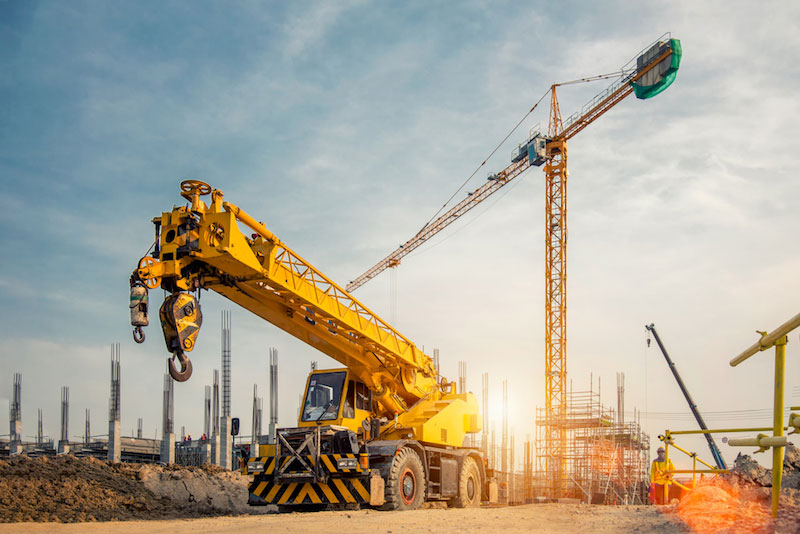Leasing Vs. Purchasing Building Equipment: Making the Right Choice for Your Task
When getting started on a building and construction task, among the crucial choices that project stakeholders and managers face is whether to get or rent construction equipment. Both choices have their drawbacks and advantages, making the option a critical one in the job preparation procedure. The decision depends upon numerous variables such as price considerations, job period, equipment upkeep, threat, scalability, and versatility monitoring. Each element plays a crucial duty in identifying one of the most ideal course for the task's devices demands. boom lift rental. Allow's discover these elements further to comprehend exactly how they influence the decision-making process and eventually the success of the project.
Expense Considerations
Renting tools typically calls for lower initial repayments contrasted to buying, making it an eye-catching alternative for short-term jobs or contractors with spending plan restrictions. In the long run, constantly renting tools can accumulate greater expenses than purchasing, specifically for extended jobs.
On the other hand, getting building and construction devices includes greater ahead of time expenses yet can result in long-lasting cost savings, particularly for regular individuals or lasting jobs. Possessing tools supplies versatility, convenience, and the potential for resale worth once the project is finished. Additionally, possessing equipment permits for customization and knowledge with certain equipment, potentially increasing effectiveness and performance on-site. Ultimately, the decision in between renting out and purchasing building equipment depends upon the project's duration, regularity of use, spending plan factors to consider, and long-lasting monetary objectives.
Task Period

Alternatively, for lasting projects or ongoing building work, purchasing devices can be the more cost-effective option. Getting tools can lead to cost financial savings in the lengthy run, particularly if the tools will certainly be frequently utilized. Furthermore, possessing equipment offers a feeling of control over its schedule and permits customization to fit details project needs.

Devices Upkeep
Provided the critical function project duration plays in establishing the most cost-efficient approach in between buying and renting out building and construction tools, the emphasis now moves towards examining the essential aspect of equipment upkeep. On the various other hand, having devices requires an aggressive technique to upkeep to prevent breakdowns, guarantee safety and security, and expand the equipment's life expectancy. Inevitably, a properly maintained construction tools fleet, whether leased or read owned, is essential for the effective and successful conclusion of building projects.
Versatility and Scalability
In the world of building equipment administration, the facet of versatility and scalability holds substantial value for task efficiency and resource use. Opting to rent building tools offers a high degree of flexibility as it permits for the quick change of tools types and amounts based on the progressing demands of a project.
Furthermore, scalability, one more critical factor, is inherently linked to versatility. Leasing construction equipment uses the advantage of quickly scaling procedures up or down as project needs rise and fall. Service providers can swiftly include or trade tools to match the task's altering demands without the constraints of owning possessions that might become underutilized or out-of-date. This capability to range sources successfully can result in expense savings and enhanced project timelines, making leasing a positive alternative for projects calling for adaptability and responsive source allowance.
Threat Administration
Efficient threat administration in construction devices procedures is extremely important to guaranteeing job success and mitigating possible financial losses. Building tasks inherently include different threats, such as tools failures, crashes, and task delays, which can significantly influence the job timeline and spending plan. By very carefully taking into consideration the dangers related to owning or renting building equipment, project supervisors can make educated decisions to decrease these prospective dangers.
Renting out building and construction equipment can use a level of risk reduction by moving the obligation of maintenance and repairs to the rental firm. This can minimize the monetary concern on the view publisher site task owner in case of unanticipated equipment failings (heavy equipment rental). Additionally, renting out offers the versatility to gain access to specific devices for specific task stages, lowering the risk of owning underutilized equipment
On the other hand, having construction devices offers this hyperlink a sense of control over its use and upkeep. Nonetheless, this likewise suggests bearing the complete obligation for repair services, maintenance costs, and depreciation, boosting the economic dangers associated with devices ownership. Cautious danger assessment and consideration of aspects such as job period, devices application, and upkeep needs are essential in identifying the most appropriate choice for efficient risk monitoring in building and construction tasks.
Conclusion
To conclude, when making a decision in between leasing and buying building equipment, it is very important to think about cost, job duration, equipment upkeep, scalability, flexibility, and threat management. Each variable plays a critical role in figuring out one of the most appropriate alternative for the task handy. By meticulously examining these aspects, project supervisors can make an informed choice that aligns with their budget plan, timeline, and overall job goals.
